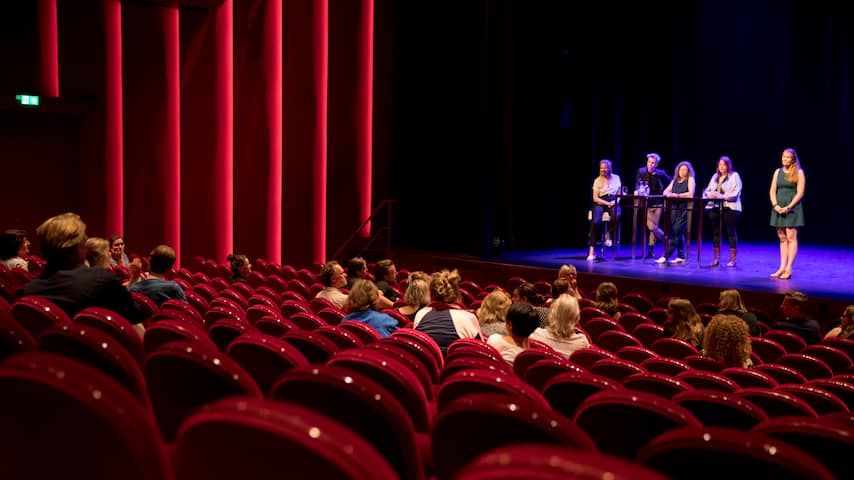Being able to walk around a museum in peace or relax in a quiet space during a festival. It sounds like a luxury, but for people who are sensitive to stimuli, it may be necessary. The cultural sector tries to contribute to this.
Two weeks ago, the Groninger Museum held its first low-stimulus opening. By admitting fewer people, setting up chairs, dimming the lights and turning off the music, stimuli were kept to a minimum.
“Around 35% of the Dutch population suffers from a disease that leads to overstimulation,” Iris van Heesch, director of the Unlimited Enjoyment Foundation, told NU.nl. “These include people with autism, brain damage and tinnitus. But also people with burnout or patients with pulmonary covid.”
More and more cultural institutions and organizers of festivals and concerts are trying to take these people into account. Van Heesch is pleased with this development, although she says the current supply is still insufficient.
“When I started my foundation seven years ago, people thought I wanted VIP treatment for a certain group. Now they understand it’s about accessibility.”
Museums organize less attractive evenings
The Groninger Museum has posted a document online in which it prepares sensitive visitors for a visit to the museum. It shows, for example, what the entrance looks like and how you can recognize employees.
“We plan to hold such a low-stimulus expo four times a year,” says Ellis Hendriksen, Head of Attendance and Education. “But depending on interest there may be more. We are also looking at the days and times when we can best offer this.”
The Rijksmuseum Amsterdam has been running unstimulated opening hours for some time now, with the help of the Unlimited Enjoyment Foundation. “For some people, the museum is too busy during the day,” says Accessibility Manager Cathelijne Denekamp.
“Because we want to be there for everyone, since 2020 we’ve been hosting low-stimulus opening after closing at least six times a year. These evenings are almost always sold out and the response we’ve received has been very positive.”

Low stimulation spaces at festivals allow more people to “pop”
A museum is quiet compared to a techno festival with over 100,000 visitors, like Awakenings. And yet, such an event must also be accessible to people with a low tolerance to stimuli.
“It’s of course very unfortunate for people who would like a festival, but don’t know if they’re attracting all these urges all day long. That they can’t go with their friends who go to festivals. A Low stimulation space on site, where they can recuperate for half an hour can be a solution,” says Nikki Schuurs, sustainability manager Awakenings works in conjunction with the HandicapNL foundation.
But how do you divide such a space? “There is a sort of hall where someone from HandicapNL tells you which room you can go to. There are four rooms in total where you can sit with three people. There is a television with soothing images” , explains Schuurs.
“Of course, there are also headphones with noise reduction: you can’t get such a completely silent room in the middle of a festival. Artists have created playlists with soothing music that you can put on.”
Internal rules have also been established to ensure that the space is used for the right reasons. For example, there are only sweet conversations, no mess is made, and you are not just talking to people in the room.
Schuurs does not yet dare to say what the demand is. “It’s the first time we’ve done this, so we still have to get known and grow. We will definitely learn a lot from this edition. What we can still use next year and share within the festival world.”
Offer also for people who stay at home
Van Heesch also tries to review online offers together with organizations from the cultural sector. “There are people who can’t get out of their homes because of all the inducements. For them, going out is already asking too much. For this group, for example, a live broadcast of a theater performance could be a solution.”
In the meantime, the Unlimited Enjoyment Foundation continues to encourage and advise organizations to open their offer or to make it more accessible to people sensitive to stimuli.
“The least organizations can do is make sure their information is up to date. Make sure the information on the website is clear and easy to find,” says Van Heesch. “The visit to a museum or a concert begins at home and not just at the door of the hall.”

“Food expert. Unapologetic bacon maven. Beer enthusiast. Pop cultureaholic. General travel scholar. Total internet buff.”
 DodoFinance Breaking News Made For You!
DodoFinance Breaking News Made For You!
